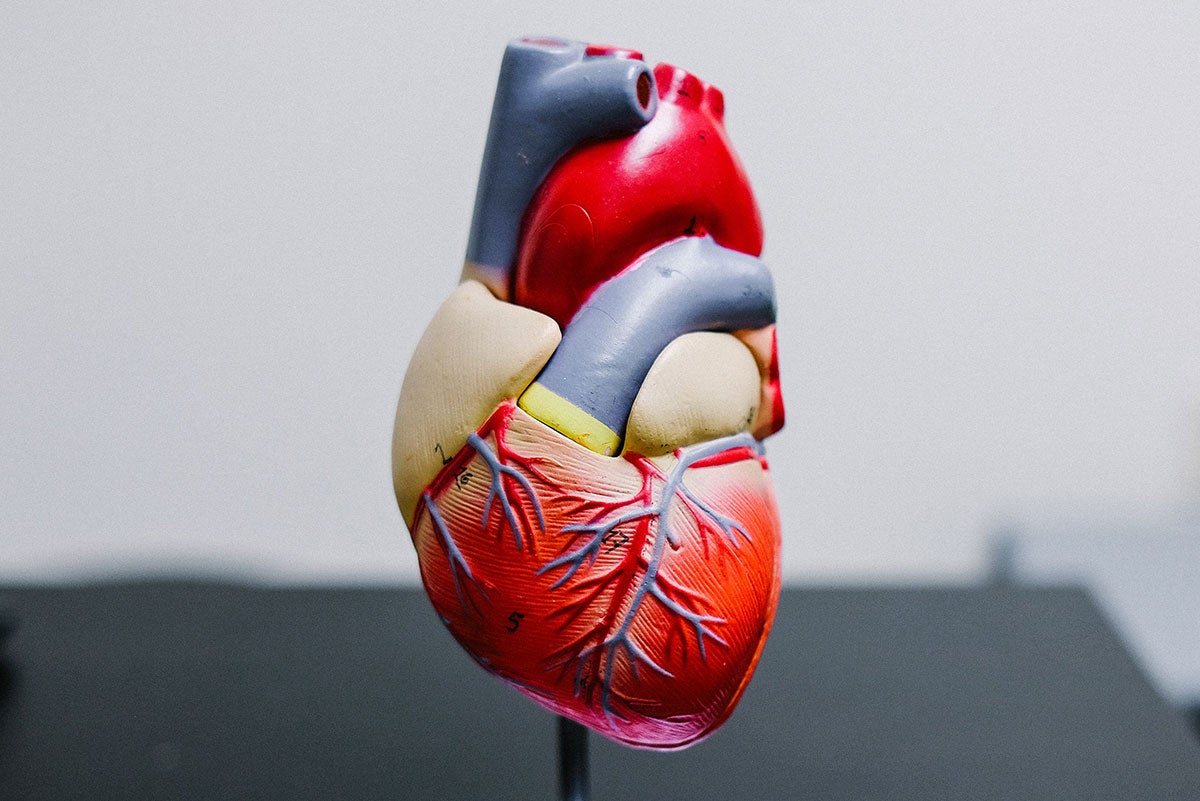Heart attack is the leading cause of death in the U.S. and places a tremendous economic burden on our society.
Heart attack is the leading cause of death in the U.S. and places a tremendous economic burden on our society. Heart attacks result from a process called atherosclerosis, which is when plaque builds in the arteries. As the plaque builds up, the wall of the blood vessel thickens resulting in narrowing of the channel and a reduction in blood flow. This decreases the delivery of oxygen and other nutrients to the body.
The build-up of plaque in the arteries reducing blood flow to the heart is called coronary heart disease, which causes angina or a heart attack. Plaque build-up in the arteries in the neck supplying blood to the brain called the carotid artery leads to a stroke and mini-stroke. Plaque build-up in the aorta causes an aneurysm and build-up in arteries of the leg causes pain in the legs called claudication.
All plaques start as soft and get calcific over time becoming hard plaque. The soft plaques are the ones that are vulnerable, rupture and close the artery in no time, causing a heart attack. That is the reason why optimal medical therapy is essential in preventing a heart attack.
Except in an acute heart attack, or patients with a weak heart muscle or an obstruction of the main artery, coronary artery bypass surgery, angioplasty or stenting do not prevent heart attack or cardiac death.
What are risk factors that lead to plaque build-up?
Many are aware of the major risk factors such as hypertension, high cholesterol, diabetes, cigarette smoking, obesity and physical inactivity. But now there is a focus on risk enhancers, which are family history, chronic inflammatory conditions such as rheumatoid arthritis, HIV, South Asian descent, kidney failure, eclampsia during pregnancy and premature menopause and other lipid abnormalities like triglycerides and Lp(a). These are taken into account in controlling major risk factors.
How do we manage preventable risk factors?
High cholesterol
Healthy diet along with exercise remains the foundation of heart attack prevention and that includes consuming vegetables, fruits, legumes, nuts, whole grains, vegetables or lean animal protein and fish and minimizing consumption of dietary cholesterol and sodium, processed meats, refined carbohydrates, sweetened beverages and trans-unsaturated fatty acids. The need for drug therapy is based on a risk calculator called ASCVD risk score. This calculator is available as a free application on smartphones or you can Google it. It takes into consideration age, gender, ethnicity, total and good cholesterol HDL, systolic blood pressure, any medication for blood pressure, smoking and diabetes. Based on this, adults between 40 and 75 years old are classified as low, borderline risk, intermediate or high risk. Intermediate and high-risk patients are treated with statins. Also, patients with borderline or low risk with diabetes or smokers and those with risk-enhancing factors are treated with statins irrespective of the risk score. Note that the family history is not taken into this calculation and low and borderline risk group can be reclassified by coronary calcium score, which is obtained through an inexpensive ultra-fast CT scan of the heart with no dye injection at very low radiation risk. This determines whether you are at low, moderate or high risk. Statin therapy is recommended based on the score. It is not a test of choice if one is experiencing chest pain. Patients with diabetes, chronic smokers and very high cholesterol are treated with statins irrespective of coronary calcium score.
High blood pressure
The goal is to keep blood pressure less than 130/80 in high-risk group with diabetes, kidney failure and those with multiple major risk factors If you are at low risk, the goal is to keep it less than 140/90. The first step is a lifestyle change that includes consuming sodium less than 1,500 mg and a DASH diet (Mediterranean diet), regular exercise, weight loss and moderation of alcohol. If that fails, medications will be prescribed. All type of physical activities such as aerobic exercises or dynamic exercises or resistance exercises are effective in reducing BP modestly. Stretching is equally effective in lowering the BP. Home BP monitoring is the best way to diagnose and treat high BP.
Chronic cigarette smoking
Cigarette smoking remains a strong independent risk factor for a heart attack and premature death. Those who do quit will reduce their risk of a heart attack and cardiac death similar to that of nonsmokers after over 15 years of quitting. E-cigarettes and vaping also may increase risk of heart attack, arrhythmias and hypertension. Second-hand smoking also increases risk of heart attack and there is no safe lower limit of smoking. Tobacco use dependence is a chronic disease that requires highly skilled chronic disease management.
Diabetes
This calls for lifestyle changes and includes a healthy diet with calorie restriction, regular exercise and weight loss. Control of blood pressure and cholesterol is extremely important in a diabetic patient. Some diabetic medications are proven to be of benefit in reducing cardiovascular mortality in patients with established atherosclerotic heart disease but may be beneficial in those without preexisting heart disease. Examples are Metformin, Jardiance and Byetta.
Obesity
Nearly two-thirds of adults in the U.S. are overweight or obese. There is a continuous, linear relationship between being overweight and the risk of a heart attack. Obesity is associated with a number of heart attack risk factors such as hypertension, prediabetes, diabetes, increased triglycerides and low good cholesterol-HDL. More significant fluctuations in weight (cycles of weight gain and weight loss) associated with increased risk of heart attack. Obese patients are recommended to participate in a comprehensive lifestyle program for six months that adheres to low-calorie diet (decrease by 500 calories or 800 to 1,500 calories per day) and high level of physical activity (200 to 300 minutes/week).
Physical activity
Despite strong evidence about the benefit of exercise in reducing the risk of a heart attack, about 50% of adults in the U. S. do not meet minimum recommendations. There is a strong inverse relationship between the amount of moderate-intensity exercise and a heart attack. Adults should engage weekly in either at least 150 minutes of moderate-intensity exercise or 75 minutes of vigorous-intensity exercise.
Family history of premature heart attack
This is an independent risk factor for a heart attack and there is agreement that development of a heart attack in a first-degree relative, such as a parent or sibling, prior to age 55 in males or 65 in females, denote a significant family history.
Aspirin
Recent observation shows no benefit in taking aspirin to prevent a first heart attack and therefore no longer recommended for most healthy adults, particularly those over 70. Patients who are high risk based on an ASCVD score or coronary score may take aspirin as long as it is tolerated.
Patient-centered approach
The patient-centered approach has three elements to prevent a heart attack: 1) a team-based approach requires collaboration between physicians, nurses, pharmacists and patients and their family members and is more effective in reducing a heart attack; 2) shared decision making involves discussion concerning the individual patient’s heart attack risk, benefits of lifestyle and drug therapy to decrease the risk of a heart attack, and potential side effects, cost of therapy and the patient’s personal preferences or values; and 3) social determents of health involves the socioeconomic factors that may limit the effectiveness of recommendations, such as the patient’s ability to buy healthy food and able exercise in a safe neighborhood.

